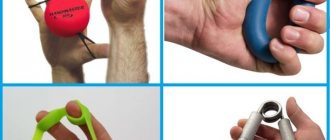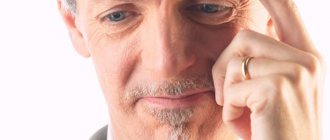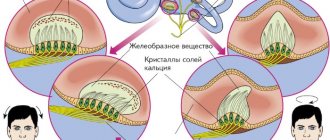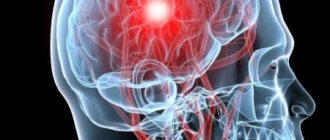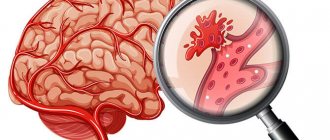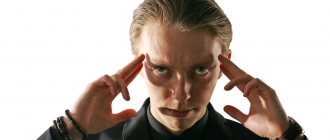General rules
Recommendations and comments on organizing rehabilitation:
- it is necessary to systematically assess the degree of violation of needs (you can learn about research methods from your doctor or an invited specialist);
- you should strive for an orderly lifestyle;
- it is necessary to monitor the dynamics of the condition (measure blood pressure, temperature, examine the skin, monitor secretions and changes in the psycho-emotional background);
- the patient should be protected from tiresome conversations, unpleasant news, and any other sources of anxiety, but the person should not be deprived of communication or work should not be done to eliminate communication barriers;
- care for patients who have suffered an ischemic stroke is built on an individual and systemic basis.
If your health worsens, you should not leave an elderly person unattended. If it is impossible to stay near a sick loved one around the clock, you should seek the help of the staff of the “Zabota” boarding house.
You need to prepare the room in advance
Lack of proper lighting can cause problems with time orientation and sleep disturbances, and a TV wire on the floor or a threshold can lead to falls when moving. To prevent excesses, the room should be arranged in accordance with capabilities and needs even before discharge.
What should the room be like?
It is important to create a safe environment. They begin by eliminating everything unnecessary from the patient’s personal room. These are any items not required during the care or entertainment of the patient. Then you need to choose the right furniture. It must be stable, without sharp corners or protruding legs. A bed equipped with pull-up devices and side rails should be installed so that the bed is accessible from all sides.
Important! If a person is able to move, then not only his personal room, but also the entire living area is modified to accommodate him. Switches are moved to the level of the lowered arm, and hygiene products in the bathroom are moved to the level of the outstretched arm.
Still have questions?
Send a request and we will be happy to answer them
What may be required
When caring for paralyzed patients after a stroke at home, minor rehabilitation means are selected individually, taking into account the symptoms of the main and concomitant diseases. May be useful:
- bolster pillow, foot pillow, neck cushion;
- a set of specialized cutlery;
- anti-bedsore mattress;
- bib;
- lift;
- vessel;
- belt for fixation;
- radio, TV;
- wall clock, calendar;
- back support;
- bedside table.
The list of funds is adjusted depending on the dynamics of the condition. As well-being improves and functions develop, furnishings are replaced with others with a lesser degree of substitution.
Important! If the patient is able to serve himself independently, then the devices for this should be located at arm's length.
Diaper or bedpan
Being bedridden is difficult not only physically, but also psychologically: for some it is more difficult to come to terms with a diaper, for others with a bedpan.
“The choice between a bedpan and a diaper usually remains with the caregiver, but, of course, one cannot help but listen to the opinions and wishes of the patient. Diapers are used by patients suffering from incontinence. In the absence of incontinence (even if the patient is bedridden but controls urination), the use of a bedpan is preferable. Here again you can put yourself in the patient’s shoes – being in diapers is usually not very comfortable,” says Alena Davydova.
If a person is paralyzed
Caring for a completely immobile patient with severe brain impairment begins with education. Without a minimum set of theoretical knowledge and practical skills, it is impossible to perform daily activities at a high level. Watch the video or ask the experts how to care for a paralyzed person after a stroke, how to wash a bedridden patient, and how to handle medical devices.
Still have questions?
Send a request and we will be happy to answer them
Position in bed
With hemiplegia, which side is affected is taken into account. Paralyzed limbs require more attention. The arm is periodically extended and placed in abduction, and the leg is bent at the knee, hip and ankle joints. Lying on the paralyzed side is not prohibited, but the head should be slightly tilted downwards. The rest of the time, on the contrary, it is raised a little.
Important! When changing body position, one should strive to maximize the person's potential. Sometimes this comes down to obtaining permission to turn over (contact can be non-verbal), in other cases the patient participates in the process more actively (pulls himself up with his arms, leans on his legs) - it all depends on the degree of limitation of self-care.
Anti-decubitus measures
Caring for sick bedridden people after a stroke in the hospital and at home necessarily includes the prevention of bedsores. Most often they form on the buttocks, shoulder blades, back of the head, heels, and elbows. Skin hygiene in these areas should be carried out most carefully. After washing, a light massage is performed to restore tissue trophism. Additionally, exercises are performed throughout the day with the help of a relative, and the body position is changed every 2 hours.
Fighting thrombosis
The basis is feasible physical activity, frequent changes of posture, maintaining immunity and drawing up a balanced menu. Passive prevention includes using loose clothing, avoiding cold and hot baths, and taking specialized medications. Creating conditions for prolonged sleep is also of great importance. The continuity of the process is ensured, among other things, by competent hygiene procedures.
Congestive pneumonia
Absolutely all bedridden patients after a stroke are at risk for the disease; home care must necessarily include monitoring of breathing. It is necessary to track so that the ward does not guess what is happening. Otherwise, he will involuntarily change the rhythm. In a healthy person it is even: there are equal intervals between inhalation and exhalation.
In the initial stage of pneumonia, changes in the depth, frequency and rhythm of breathing are observed. A disturbance in the form of prolongation of the interval is shortness of breath. The manifestation requires immediate contact with a specialist. Before his visit, it is worth reviewing the records of the patient’s recent condition (first of all, information about coughing and swallowing problems, behavior during physical activity and turning over, the fact and amount of sputum production is important). The information will allow you to quickly assess the degree of threat and create a more correct treatment program.
How to change bed linen
If such care is not carried out in a timely manner, a bedridden patient with a stroke will be at risk for the formation of bedsores. However, an incorrectly laid sheet can also contribute to the problem. To reduce risks, you need to monitor the tension of the sheet. It should not form folds. Algorithm of actions:
- lower bed rails;
- put a pillowcase on a replacement pillow;
- roll a clean oilcloth with a longitudinal roller;
- turn the transverse one to its side, secure the position;
- release the edges of the dirty laundry and roll them up with a longitudinal roller;
- decompose clean;
- place the patient on his back and then on the other side;
- release and remove the dirty sheet and diaper;
- unwind the second side of the fresh sheet and tuck in the edges;
- return to the starting position, ask about your well-being, wishes and raise the side restraints.
If there is a blanket, the duvet cover is changed last. Dirty laundry is not thrown on the floor, but immediately put in a nearby basket or bag.
Still have questions?
Send a request and we will be happy to answer them
Morning toilet and changing clothes
Hygiene procedures include washing, scrubbing, oral care and hand washing. Before each stage, it is necessary to notify the patient about the planned action and prepare all the necessary devices in advance. Their list depends on the degree of mobility. When working with bedridden patients, use:
- personal basin (strictly individual), oilcloth with diaper (placed under the head), disposable mitten, towel;
- latex gloves;
- a bedpan, gauze napkins, bedding - devices for intimate hygiene;
- rinse aid, container for collecting rinsing water, tampons, soft toothbrush, 2 towels - items for sanitizing teeth and oral cavity;
- a vessel with boiled water, cotton pads, gauze wipes - a set for cleansing the eyes;
- cotton wool and water - devices for cleaning the nose.
Important! Morning care for a patient after a stroke at home begins with preparation. It is necessary to remove jewelry, remove hair, wash and disinfect hands.
Upon completion of washing, the patient is changed into clean, loose clothes. Clothes are prepared in advance. First, the paralyzed limb is threaded through the sleeves and trouser legs, then the healthy one.
Complications and methods of dealing with them
When you stay in a supine position for a long time, blood circulation and the functioning of almost all internal organs are disrupted, and the ability of the body's immune defense is significantly reduced. Because of this, complications can arise, sometimes leading to irreparable consequences.
Low pressure
The causes of hypotension may be drug therapy in an incorrectly selected dose, redistribution of blood in a constant horizontal position, or weakness of the heart muscle. Manifestations of this condition are pale skin, dizziness, tinnitus, chilliness, drowsiness, headaches, and severe weakness.
Medicines to increase blood pressure are used in the post-stroke period for emergency treatment - in a collaptoid or shock state (Dobutamine, Mezaton).
If hypotension is mild, general tonics are recommended:
- an infusion of rose hips, St. John's wort and immortelle flowers, taken in equal parts (a tablespoon of the mixture per glass of boiling water, brew overnight in a thermos, take 50 ml half an hour before meals);
- green tea;
- honey with pollen;
- juice from carrots and celery.
Watch the video about recipes for increasing and decreasing blood pressure:
Constipation
Intestinal dysfunction is associated both with neurological disorders and with forced physical inactivity and pureed food. To prevent constipation, you need to review your diet to include:
- juices from vegetables (carrots, beets, pumpkin), fruits (apricots, plums);
- vegetable oil (in the morning on an empty stomach, take a tablespoon with half a glass of cool water);
- decoction of prunes, dried apricots and figs;
- homemade fermented milk drinks using starter cultures;
- additive for porridge, kefir - a teaspoon of ground bran, pre-steamed with boiling water, be sure to drink at least 1.5 liters of water;
- ground dry seaweed (kelp) - use instead of salt;
- infusion of flaxseed (a tablespoon per glass of boiling water), strain after 20 minutes, drink twice.
If these preventive measures are insufficiently effective, laxatives help achieve regular bowel movements. In consultation with your doctor, use:
- laxative tea;
- Guttalax, Regulax, Picolax drops;
- Senadexin tablets;
- Duphalac syrup;
- therapeutic enemas Norgalax, Microlax, Normacol, Enema;
- laxative suppositories – Bisacodyl, Glycerin.
If there has been no bowel movement for more than 3 days, a cleansing enema is indicated.
Pneumonia
Acute pneumonia in the post-stroke period is the cause of death in approximately 20% of cases. In a bedridden patient, its main cause is the entry of water and food into the respiratory tract.
Therefore, it is not recommended to feed the patient in the usual way in the absence of consciousness or sensitivity of the pharynx, or impaired cough reflex. Such patients are advised to administer a nutrient solution through a tube or intravenously.
Severe pneumonia increases cerebral edema and leads to worsening neurological abnormalities. Manifestations may include: difficulty breathing, cough, chest pain, increased body temperature. It should be taken into account that in elderly and weakened patients, pneumonia can occur without fever. Treatment requires antibiotic therapy. It is possible to prevent the development of this complication by:
- regular breathing exercises;
- turning over in bed on your side every 2 hours;
- use of vibration (anti-bedsore mattresses);
- tapping the chest in a position on the healthy side.
Watch the video about preventing pneumonia in bedridden patients:
Bedsores
They arise due to excess pressure of the body weight on areas of contact with the bed. They may fester with the development of sepsis. When a bedsore forms, the skin turns pale, then turns red and becomes dead. To prevent the occurrence you need:
- from the first days of staying in bed, examine the patient’s sacrum, shoulder blades and heels, wipe them with camphor alcohol;
- change body position;
- avoid sweating or diaper rash;
- regularly replace wet clothes and sheets, use absorbent diapers under the buttocks and perineum;
- purchase an anti-decubitus mattress or rubber circle;
- Wash the patient daily and dry the skin completely;
- carry out massage and therapeutic exercises.
Stages of bedsores
To heal the skin defect, ointments are used: Actovegin, Solcoseryl, Oflocain, Methyluracil, Panthenol, Argosulfan.
Features of feeding
Basic principles: balanced diet, adherence to regimen, frequency of doses. Food should be given at the same time approximately 4-5 times a day. The menu is compiled taking into account the following points:
- Vegetable proteins contain fewer amino acids, so they are of low value;
- refusal of carbohydrates is unacceptable, since their deficiency leads to the breakdown of tissue proteins;
- Recommended ratio of animal and vegetable fats: 7 to 3.
When feeding, the head is raised, the chest is covered with a napkin and the reaction is carefully monitored. It will allow you to understand in a timely manner that the patient is in pain or has difficulty swallowing. In this case, avoid viscous foods: soft fruits, fermented milk products, syrups, jams.
Nutrition and eating assistance
Organizing proper nutrition is one of the steps towards a speedy recovery of the body. Fried, fatty and smoked foods should be excluded from the patient's diet. Avoid foods that may cause constipation or intestinal fermentation. Meat, fish and vegetables must be steamed or baked in the oven.
Care after a stroke can be complicated by the person being unable to feed themselves or having trouble chewing. Such patients need liquid food and assistance in taking it. Patients should be fed frequently, in small portions. Monitor the calorie content of foods. The body of bedridden patients is not able to digest heavy food.
Controlling bowel movements
Bowel movements should be regular and painless. The absence of discharge for 3 days is a reason to consult a doctor. Changes in the color of the masses are also a cause for concern. Normally, feces with a mixed diet are brown or yellowish-brown. A dairy diet makes it yellow, a meat diet makes it dark brown. Black color is a sign of bleeding. A gray tint combined with a clayey consistency indicates a blockage of the bile duct. Yellow opaque lumps should be regarded as mucus.
Home rehabilitation
Includes procedures and activities aimed at restoring partially or completely lost functions. Motor activity returns with the help of massage, exercise therapy, and medication. Speech problems are solved using a program developed by a speech pathologist. At the same time, family members should take into account that after a blow, sometimes writing skills are restored earlier.
Activities to improve memory must be included: doing exercises, visiting favorite places, talking about the past or books previously read. It makes sense to try offering your client a crossword puzzle or a collection of simple mathematical problems - the degree of their complexity and the appropriateness of the method as a whole are determined by the attending physician.
Exercise therapy
Passive exercises are performed from the first days of illness (usually 3-4). The effect also affects the muscles of the affected side. All movements are smooth. Harsh ones should be avoided, as they provoke tone and pain.
Active physical therapy begins at the end of the acute period. Healthy limbs are primarily involved in the process. In this case, the patient must mentally repeat the movements of the sore arm and leg. This is ideomotor gymnastics, it helps restore activity to damaged muscles.
Duration of one session: 10-20 minutes. Repeat it every 3-4 hours.
How to get up
After 3-4 weeks from the moment of cerebral hemorrhage, doctors can include in therapy measures aimed at restoring walking functions. One of the stages preceding this stage is learning to stand up. The speed of further motor rehabilitation largely depends on how this milestone is overcome.
You should get up with someone else's help. A close relative supports the ward by the waist and ensures that the body weight is evenly distributed between the lower limbs. When bending the injured leg, it is placed in the correct position. Being in this state in the first stages should not last longer than 3 minutes, and for the first time it is limited to 50-60 seconds.
Speech problems
They can affect both the process of understanding what is said and speech reproduction. Work to eliminate communication barriers and restore function should be carried out regularly, since difficulties with speech lead to isolation and provoke depression. The duration of therapy can be 3-4 years. During this time, you should use short constructions, reinforce the learned words with repeated everyday use, and try not to ignore the patient’s “special language.” If there is no reaction, the patient is able to refuse communication altogether.
Prevention of recurrent stroke
Medications. The risk of another stroke after having already suffered increases 10 times. That is why it is extremely important to prevent a recurrent stroke while still in the hospital during the treatment of the first stroke. To do this, you need to control blood pressure, improve blood circulation, and saturate the blood with oxygen. It is almost impossible to restore cells that have died after a stroke, so the basis is to prevent the development of the consequences of a stroke and prevent a recurrence.
It is possible to use antidepressants to relieve deep stages of depression after a stroke, anticonvulsants to stop seizures and muscle relaxants to relieve muscle tension. Anticoagulants and antiplatelet agents are the main drugs for preventing recurrent stroke.
It is extremely important to pay attention to concomitant chronic diseases. During this period, they can especially become aggravated, which is extremely undesirable. Preventive measures will help here, which include the use of vitamins to support the immune system, nootropic drugs that can increase the stability of the brain in case of lack of oxygen. Also, nootropics affect the restoration of attention and memory. However, all this can only be prescribed by a doctor.
Non-drug treatment. In addition to using medications, it is important to engage in physical therapy, physiotherapy and massage sessions. It is worth eliminating stress and reducing the load to a minimum. Alcohol and nicotine are strictly prohibited. Medicines must be taken strictly according to schedule. All these measures are aimed at reducing risk factors and preventing stroke. And that is why it is extremely important to follow the recommendations . This is the only way to protect against a recurrence of a stroke and fully return a person to society.
How to Avoid Depression
Considering the features of stroke care, it is impossible not to note the importance of maintaining a psycho-emotional background. To avoid destabilization, it is necessary to ensure that the person lying is surrounded by attention, his room is always tidy, and there are flowers on the table. But first, the issue of physiological needs is resolved, and only then they move on to creating a favorable environment.
It is important to communicate with the person, organize meetings with friends and distant relatives. Every small success, for example, the restoration of the ability to hold a spoon, should be positively assessed. This allows you to cheer up the patient and compensate for the lack of self-esteem.
Attention! All patients meet their highest level needs differently, so an individual approach is required. It is also important to remove communication barriers and physical constraints. If the patient is trying to walk, then you need to remove things that can interfere with his activity.
